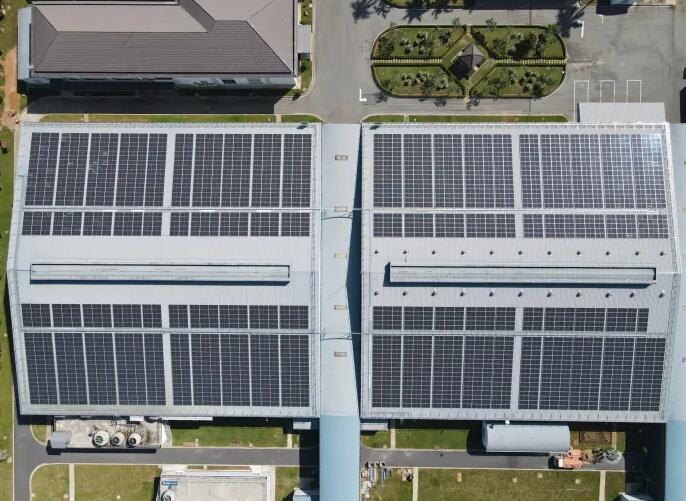https://en.solarbe.com/home/article/info/catId/49/id/5781.html
Solar energy had a bumpy ride in 2021

Image by German Solar Power from Pixabay
The U.S. solar industry faced unprecedented price increases and project delays in 2021 due to supply chain and trade issues that persist today. The turmoil posed a threat to President Joe Biden's decarbonization goals, according to a new report.
A review of the U.S. solar industry in 2021 also found that solar prices rose 18%, and that a third of utility-scale projects planned for the fourth quarter of the year were pushed into 2022.
The report, published by the Solar Energy Industries Association and Wood Mackenzie, said that the U.S. was on track to deploy no better than 39% of the solar capacity needed by the end of the decade to meet the Biden administration's decarbonization goals without an extension to the Investment Tax Credit (ITC).
A long-term extension of the solar ITC is part of the $550 billion for clean energy in the Build Back Better Act, which is stalled in the Senate.
“In the face of global supply uncertainty, we must ramp up clean energy production and eliminate our reliance on hostile nations for our energy needs,” said SEIA CEO and president Abigail Ross Hopper. She said that if lawmakers pass a long-term extension of the solar ITC and invest in U.S. manufacturing, solar installations "will increase by 66% over the next decade, and our nation will be safer because of it."

The coronavirus pandemic amplified inadequacies and gaps in the solar industry's supply chain, which is heavily reliant on components produced in China. And importing non-Chinese polysilicon to avoid anti-dumping and other trade enforcement action can come with as much as a 20% premium to U.S. solar module manufacturers.
Based on that argument, members of the Solar Energy Manufacturing for America Coalition on March 7 called on the Biden administration to back legislation that would bolster the domestic supply chain. The Solar Energy Manufacturing for America (SEMA) Act won support in the U.S. House of Representatives but has so far failed to gain traction in the Senate.
"The U.S. cannot remain reliant on overseas solar supply chains, nor can we assume those monopolized supply chains will continue to keep prices low," the group wrote. "Moving from foreign dependence on fossil fuels to foreign dependence on clean energy is not how we can truly build back better and meet our climate targets."
In a January interview with Renewable Energy World, Michael Parr, executive director of the U.S.-based Ultra Low-Carbon Solar Alliance (ULCSA), said that a supply chain realignment was underway at a pace that has been "faster than expected.”
For example, in late December Swiss-based Meyer Burger said it would locate a manufacturing facility in Goodyear, Arizona, with an initial production capacity of 400 MW by the end of 2022. The facility could scale to 1.5 GW over time and will produce modules for residential and commercial rooftop installations as well as utility-scale projects.
And in August, Arizona-based First Solar, Inc. broke ground on its third manufacturing facility in Ohio. The 3.3 GWDC facility is scheduled to start operations in the first half of 2023, and represents a $680 million investment. When fully operational, the facility is expected to scale the company’s Northwest Ohio footprint to a total annual capacity of 6 GWDC, which the company said would make it one of the largest fully vertically integrated solar manufacturing complexes outside China.
Chinese manufacturing commands a market share that would have been the envy of OPEC producers during the height of their influence over global oil markets. A recent report from ULCSA pegged China’s total production capacity in 2020 at around 400 GW, dwarfing the roughly 39 GW of capacity in Europe and North America combined.
Despite the supply chain and trade headwinds facing the solar industry, 2021 was still record-breaking in many ways. More utility-scale solar capacity -- nearly 17 GW -- was installed in 2021 than any other year, according to the SEIA/Wood Mackenzie report.
That number could have been higher, though, but delays pushed some projects into 2022. The report estimated that utility-scale solar installations will fall by 14% in 2022 compared to 2021.
Wood Mac adjusted its short-term, 2021-2022, total solar capacity forecast down 11 GW or 19% since issuing its outlook in September 2021 (chart below).

The residential solar market, meanwhile, wasn't as hard hit by supply chain and trade issues as utility-scale development but faced its own set of challenges in 2021. Component prices increased, while battery and module supplies were constrained.
The annual installed capacity of residential solar reached 4.2 GW in 2021, a record, from more than 500,000 projects.
If Congress chooses to extend the ITC before it expires at the end of 2023, Wood Mackenzie's residential outlook increases by 13 GW of 21% from 2023 to 2032.



